Estimated reading time 10 minutes, 54 seconds.
By the end of 2023 or early 2024, the Canadian government will select a fleet of medium altitude and armed Remotely Piloted Aircraft Systems (RPAS) for the Royal Canadian Air Force (RCAF), to support domestic and international operations.
After over 15 years of analyzing options — and at least one name change — the RPAS project was narrowed to two contenders in 2019 through an invitation to qualify (ITQ): an IAI Heron TP offered by a team led by L3 Technologies MAS, and an MQ-9B SkyGuardian, a variant of the MQ-9 Reaper, offered by General Atomics Aeronautical Systems and the U.S. government.
However, the SkyGuardian may be the only option still standing.
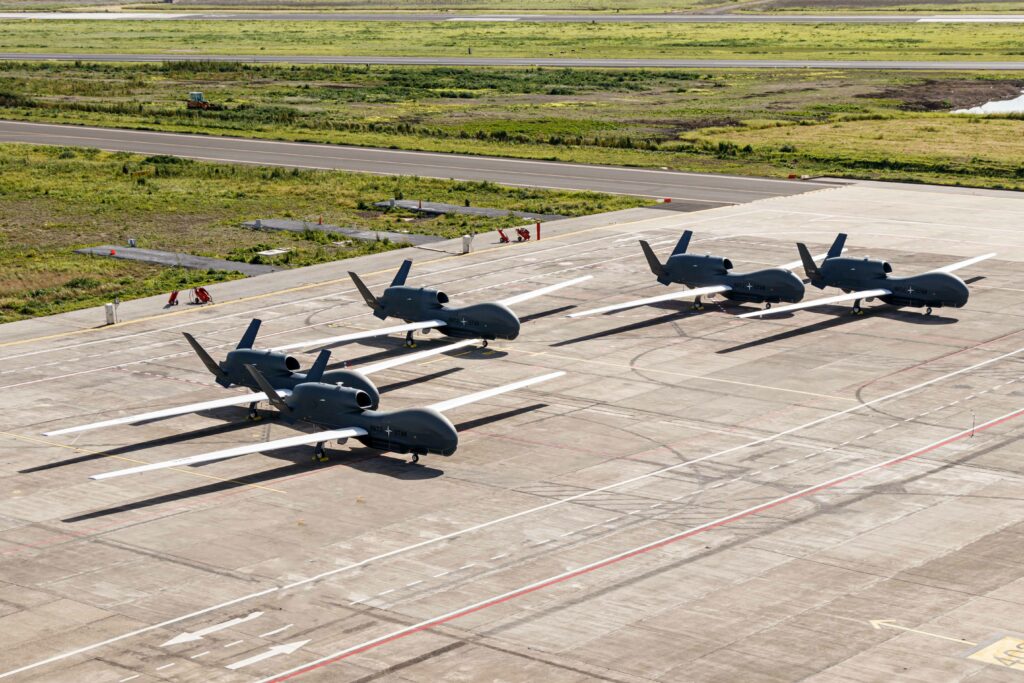
In February 2022, Public Services and Procurement Canada issued a request for proposals; a few months later, on May 31, it posted an update stating that L3 Technologies MAS had withdrawn from the competition and only General Atomics remained — though it reserved the right to re-open the ITQ.
While the government assesses its options, and a project team in the RCAF Directorate of Air Requirements refines how and where the system will be staffed and operated, a small cadre of Canadians is learning the finer details of supporting uncrewed aerial system operations at an operating base across the Atlantic in Sigonella, Italy.
The NATO Alliance Ground Surveillance (AGS) system provides commanders with all-weather persistent intelligence, surveillance, and reconnaissance (ISR) data from a fleet of five RQ-4D Phoenix aircraft and ground command and control stations. Still a nascent capability, NATO AGS declared initial operating capability (IOC) in February 2021, after completing a series of flight tests between late 2015 and late 2020 as it accepted the five aircraft and established its main operating base.
Though the concept of a NATO RPAS capacity has been debated since the early 2000s, the current program took shape in 2006 with a memorandum of understanding among 15 allies. A procurement contract with Northrop Grumman for the system, based on the U.S. Air Force Block 40 Global Hawk, was reached in 2012.
Canada was not among the original participants, but it has had a foot in the program almost since the outset of flight testing in 2015. At present, the RCAF contingent consists of a mission director, a pilot, two sensor operators, and an intelligence operator. A sixth position, likely another intelligence operator, will be added by the time AGS reaches full operational capability.
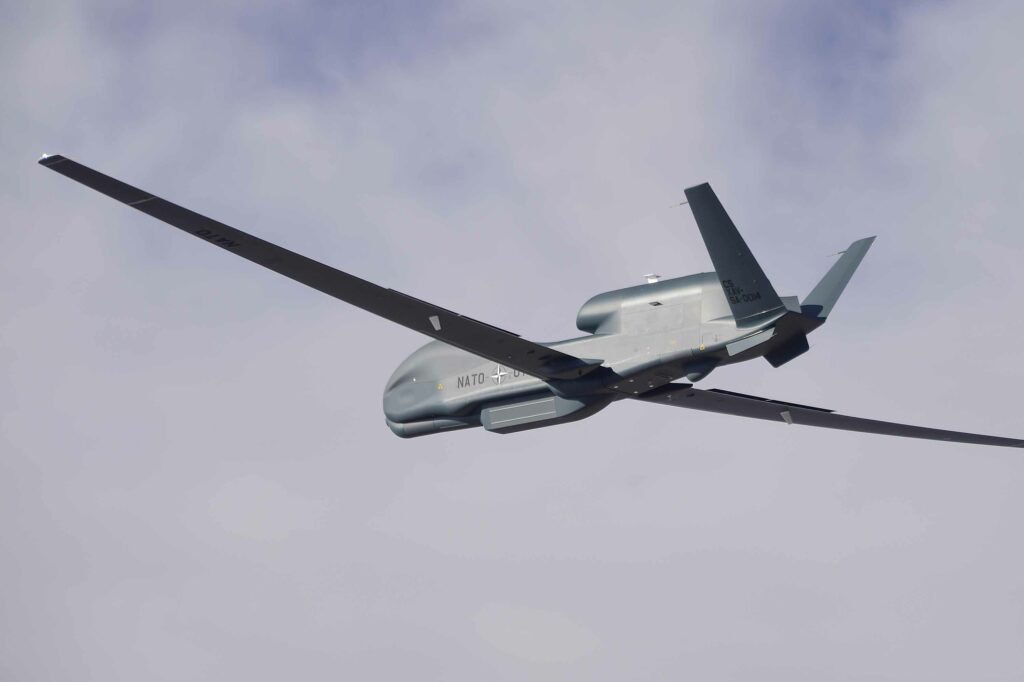
It’s a small footprint among the more than 300 multinational members that make up the NATO capability, but it’s a highly visible one, observed Maj Luke Sellar, a mission director and the senior national representative in Sigonella. The pilot, Capt Chad Chipchase, is one of the most experienced and serves as an instructor and evaluator, while the lead sensor operator also provides instruction and evaluation.
“For the flying squadron of AGS, they are leaders,” said Sellar, a CP-140 Aurora pilot and crew commander, with a background in manned ISR collection, who arrived in Italy in the summer of 2021. “Canada represents five people out of hundreds, but the mark that we leave on this establishment is definitely above that ratio.”
Chipchase, in fact, was part of the flight test program and flew the inaugural flight in 2020 — a sortie of over seven hours collecting data in an undisclosed region.
“It was a real thrill to be on that,” he said. “This has been a big project, and a big thing to stand up a NATO owned and operated asset. I know [it] went through a few delays and, like any new platform, it can be frustrating to get going. But to have the honor to be on that very first flight (and it wasn’t just a training flight), and to be that first guy to land the aircraft, that was special. It makes me feel like we really accomplished something, not just as Canadians, but NATO wide.”
A CC-177 Globemaster pilot, Chipchase began his Air Force flying career on the CT-142 “Gonzo,” a Dash 8 used to train Air Combat Systems Officers and Airborne Electronic Sensor Operators. He learned the finer points of RPAS operations in 2011 when he was deployed to Kandahar, Afghanistan, for the final rotation of aircrew operating the leased IAI Heron. He was selected for NATO AGS in 2018.

“I’ve been operating the [RQ-4D Phoenix] since our first flight,” he said.
Since declaring IOC, AGS has conducted over 90 flights in direct support of NATO operations, including flying the system for eight consecutive days in mid-May along NATO’s eastern flank. For operational security, Sellar was cautious about the details of the Phoenix flights, but “we are patrolling NATO’s eastern flank regularly,” he said. “The vast majority of our operations right now are within the Black Sea and the Baltic regions.”
A typical mission consists of providing real-time information to decision makers about movement on the ground via a ground moving target indicator (GMTI) and/or photo imagery from a synthetic aperture radar for analysis. AGS has a federated processing, exploitation, and dissemination (PED) cell that develops ISR-related reports for alliance members based on AGS raw data.
The sensor operators sit next to the pilot in the control station and task the sensors to collect ISR targets as planned. The intelligence operators control the GMTI and synthetic aperture radar.
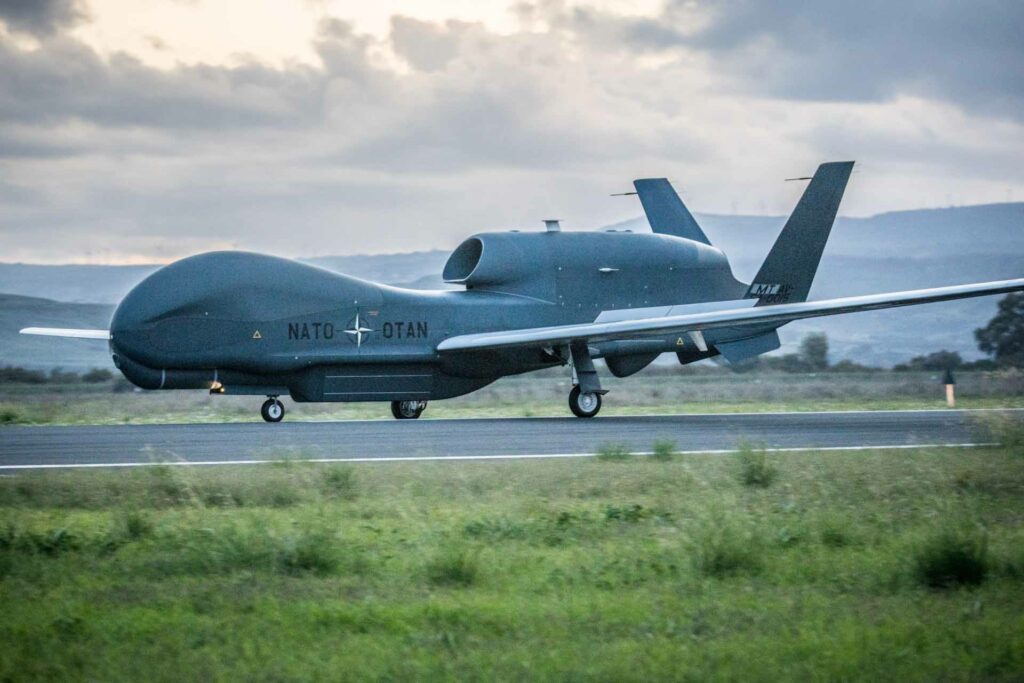
“I can’t really get into exactly where we’re looking and what we’re looking for, but it’s all ground-based activity in areas of interest,” said Sellar, whose Aurora crew commander background has translated well to the mission director role of coordinating, planning, and executing NATO taskings.
The RQ-4D Phoenix is a high-altitude, long endurance (HALE) aircraft that generally operates above 50,000 feet (15,240 meters). “It’s a little quieter up there with respect to other aircraft, and we have a lot of freedom of movement,” said Chipchase. Though his experience with the Heron has helped, it was a line-of-sight platform with no “beyond-line-of-sight satellite communications.”
While you do not get the same “sense of a turn or a climb, that seat-of-the-pants feeling that we like to have when we’re flying . . . you still have to have a really good scan when you’re in a remotely piloted system,” he said.
It’s a matter of trusting your sensors.
“Because we’re not physically in the aircraft, we do rely on communication links to the aircraft, whether that’s a line-of-sight radar dish or bouncing off a satellite. It’s an added element that we need to keep an eye on,” explained Chipchase.
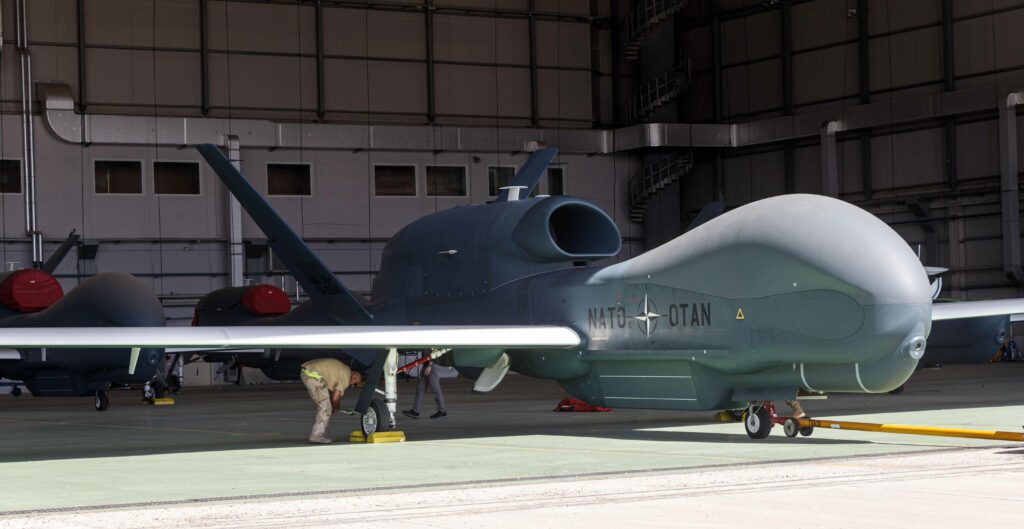
Despite having a pilot and sensor operators, the Canadian contingent rarely flies together. One of the strengths of the AGS is the multinational make-up of the crews and analysts. For Chipchase, who will join the Directorate of Air Requirement project team after his tour, seeing how different national approaches to RPAS operations can converge into one standard has been rewarding.
“I get to see all of them from an instructor or evaluator role,” he said. “Different nations bring a plethora of knowledge, but also different terms. You have to be cognizant of communication. I need to watch how I say things, maybe not use the acronyms that I know, and slow down my speech because they’re translating from English into their native language.”
It’s a similar situation in the mission control center, said Sellar. Language and terminology can be barriers at times, but avoiding acronyms and jargon overcomes most of that. “I’ll be talking to the senior imagery analyst in the mission ops support center, and they’ll tell me that they need a certain image to be taken from a certain angle, or to focus on a specific place; sometimes, when the language barrier kicks in, you really need to slow down and use concise language,” he said.
“I’ve been nothing but impressed with the language skills of the different nations at AGS,” he added. “There are seven mission directors here and we’re all from different nations. The multinational aspect of this is very impressive. I’ve had a lot of experience working with our friends in the United States Navy, but to work with people from all over Europe has been a very positive experience.”
The Canadian team has not been tasked with bringing home specific lessons for the RPAS project, but Chipchase will join the project with ideas about personnel requirements and how it could be operated.

“From a technical standpoint [and] a communications standpoint, seeing some of the hurdles that we’ve had to jump over — with respect to beyond line of sight, operating in certain areas, and resolving difficult issues — because I’ve been able to go through that [here] with NATO, I can take that corporate knowledge back to Canada,” he said. “Maybe [I can] help [the RCAF] avoid those hurdles or get over them a little easier.”
Not many members of the Heron program in Afghanistan are still flying, he noted. By “Canada sending people here — whether it’s pilots, sensor operators, mission directors, [or] analysts — it’s all going to help give us just a little bit of experience when we finally make the decision on what we’re going to buy.”
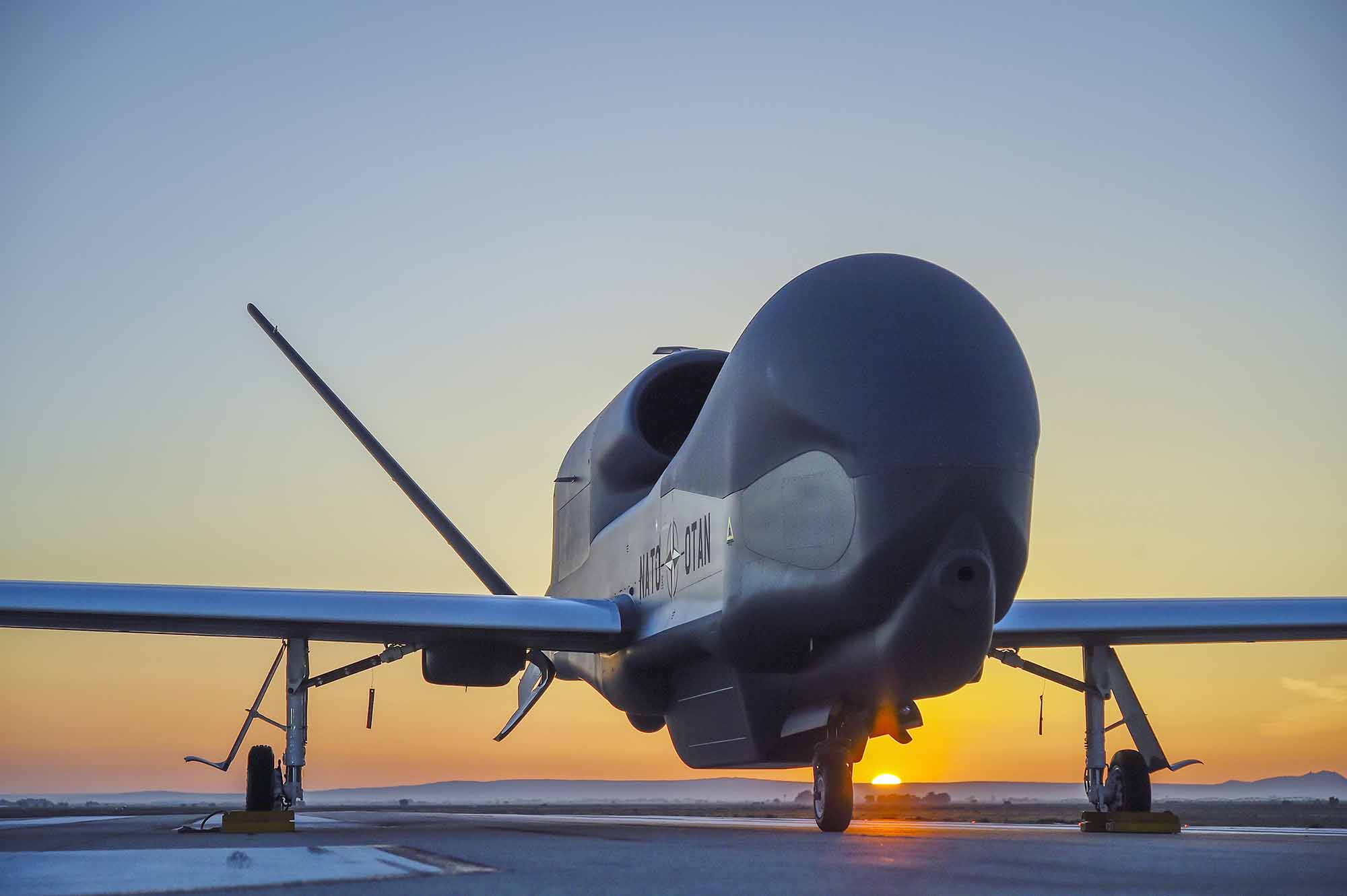

Proud to be Canadian, knowing great leaders like Chad are serving our country.
Harry. Rumley , Nova Scotia